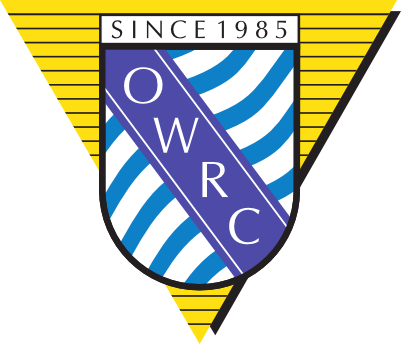Article Written By Shirwin Smith
Have you ever wanted to go out when the chop was bigger than your shell -or you - could comfortably handle? What about those days when you started out on decent water that blew up into a nasty mess during your workout, leaving you wondering if you'd get back to the boathouse? Have you ever looked out over a large, unprotected, beautiful body of water that offered miles and miles of sculling and wished you had a shell that could get you out there? These days there is a solution to all those situations - open water rowing and the shells designed for it.
Many of you may be familiar with the Alden Ocean shell, introduced in 1971 as a cross between the stability of a rowing dory and the workout and speed potential of a racing single. The intention was to have a sculling boat that would serve the needs of novice scullers as well as those who had no choice but to row in frequently choppy waters that a flat water racing single couldn't handle. In the almost twenty years since the Alden appeared, that breed of shell has come into use across the country and that increase encouraged the introduction of other such shell designs by companies on both coasts. These shells were shorter, wider, heavier and slower than racing singles. They were known as "recreational shells", and the sport,"recreational rowing", since - it was assumed - most were used by people just out for the exercise and fun of it, certainly not by people seriously working on technique or training for racing.
From our floating dock in Sausalito, rowers fan out into some of the most varied, challenging and scenic rowing waters anywhere. This is open-water rowing at its best; at times smooth and fast, at others swirling and tricky. On this ever-changing bay, the only constant is exceptional exercise in a breathtaking setting.
But a closer look at the current variety of shells in that "recreational" category shows a broad range from the extremely stable, slow models to the most recently developed type with 24 foot-plus lengths,12 to14 inch maximum waterline beams and weights of 31.5 to 40 lbs, made of carbon fiber, fiberglass or kevlar. These new designs have near the performance capacity of racing singles, require solid sculling technique, and yet can handle the rough conditions of a Catalina to Marina del Rey race - 32.7NM of ocean racing. With these performance characteristics becoming the norm, the name of the sport is evolving from "recreational" to "open water" rowing.
Who is it that's using these open water shells? Lots of people who just want to get out and enjoy some water-borne exercise and think of themselves as "recreational rowers". But then there are those who push themselves harder, and when you get two or more of those people together, you get races. And the races these shells are best suited to are endurance events where the distances are measured in miles (from 5 to 30 plus) rather than meters, and where stroke rates and speeds are a bit lower, to accommodate to the longer distances. The race season here on the West Coast is from March to November, with an average of two races every month organized by individuals or clubs. Coincidentally, the race distances are well suited to the age range of those involved in open water rowing - from the late twenties to early sixties, with the greatest number being in their thirties and forties. Most have been fascinated with the sport of sculling for years, but until this new design of shells expanded the availability of the sport, it had been difficult to get involved. There are also a growing number of people with a background in crew who are returning to the water years after college and find open water rowing an easily accessible form of the sport that fits into their work schedule.
So why call this "open water rowing"? Why not just stick with that old title "recreational rowing"? Because this end of the sport is "open" in the varieties of water on which the shells can be used; "open" in that many people are able to handle the shells due to their relatively wider beams and "open" in that the relatively lower cost and greater availability of these shells can bring the sport of sculling to many new participants. To separate open water shells from the extremely narrow racing shells, rowing in the latter has come to be known as "flat water" rowing. The conceptual difference between "open water" and "flat water" rowing is something that any newcomer to the sport can easily grasp, and the designations refer - properly - to the type of equipment used, not the attitude of the rower.
The way we see it, you can row recreationally in anything from an eight to an Alden: the word "recreational" refers to the attitude of the rower. A close analogy can be seen in the world of cycling, with mountain bikes and road bikes, where the same sport is practiced on equipment designed for different terrain. Racing occurs in both categories; recreational riding occurs in both categories. The names of the two forms of the sport underscore the range of possible uses provided by the different equipment designs. Using the term "open water" rather than "recreational" rowing does not intend to deny or discount the presence of those many who row entirely for the pleasure of the sport, it merely applies a name to a new and rapidly growing area of the sport which more accurately describes its characteristics and possibilities. Where can you get involved in this sport? There are a number of clubs and schools up and down the West Coast that use open water equipment.


